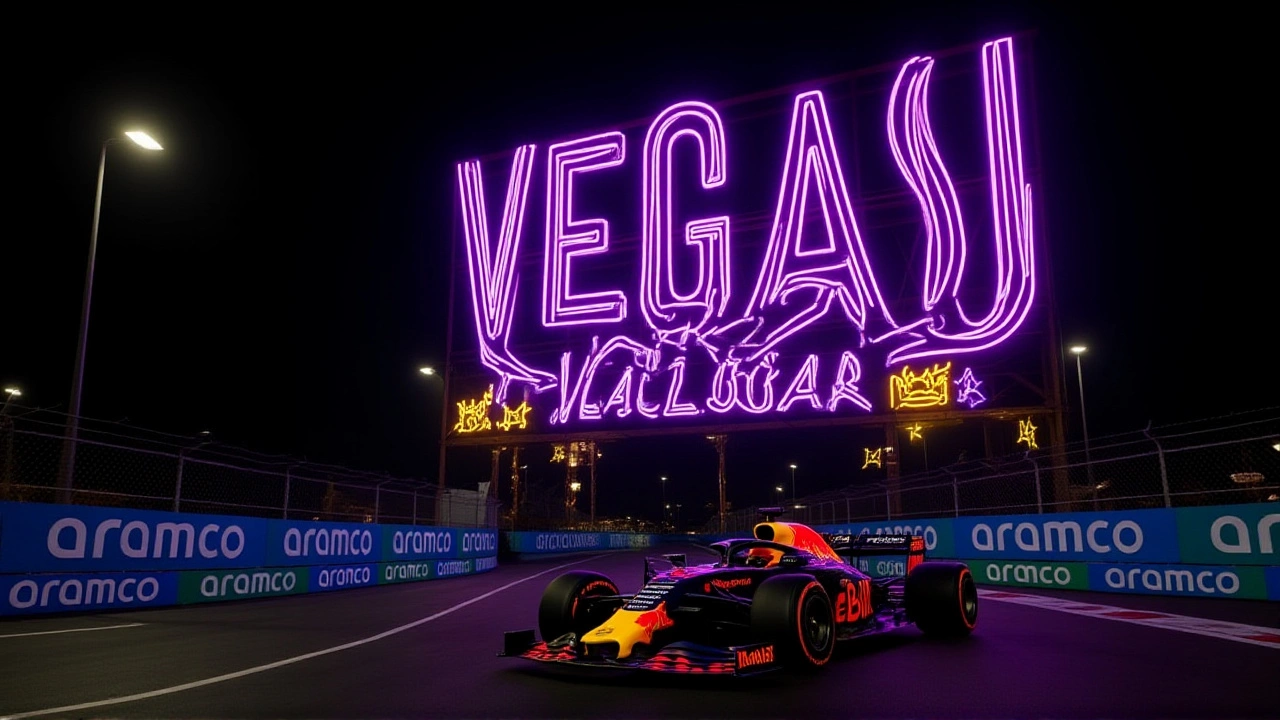The Formula 1 Las Vegas Grand Prix Las Vegas Strip Circuit is on edge — not from snow, as some misleading reports claimed, but from sudden downpours and flooded streets. On November 18, 2025, just days before practice began, water gushed out of the parking garage at the Linq Hotel and Casino , turning asphalt into a river. By November 20, a loose manhole cover on the Strip sent a red flag flying during practice — a vivid symbol of the chaos brewing beneath the tires of the world’s fastest cars. Wet weather isn’t just a nuisance here; it’s a race-wrecking wildcard.
Why Rain, Not Snow? The Climate Reality Check
Let’s clear the air: snow in Las Vegas in late November? Not happening. The city sits at about 2,000 feet above sea level, with an arid desert climate that averages just 0.2 inches of snow per year — according to National Weather Service records. When people started buzzing about snowfall, it wasn’t just wrong — it was meteorologically absurd. The real threat? Rain. Heavy, sudden, unpredictable rain. AccuWeather’s Senior Content Editor Emilee Speck confirmed showers were rolling in ahead of the event, with flash flooding reported near the Strip. But here’s the twist: forecasters now expect rain to taper off by Friday afternoon, leaving Saturday’s main event dry. That’s good news — except for the fact that the track’s surface is still soaked, and the air is cold.
The Slippery Truth: Hamilton’s Warning
Lewis Hamilton , the seven-time world champion driving for Mercedes-AMG Petronas Formula One Team , didn’t mince words. "This is probably the slipperiest track that we go to in terms of the grip we have had in the last couple of years," he told GPBlog. And he’s not exaggerating. The tarmac on the Las Vegas Strip, normally grippy under clear skies, turns into a slick film when wet — especially with oil residue from cars and street traffic soaking in. Combine that with nighttime temperatures dipping into the mid-50s Fahrenheit, and you’ve got a recipe for tire graining, aquaplaning, and unpredictable car behavior. The cold doesn’t just make drivers shiver — it kills tire warmth, which is critical for grip. In Monaco or Spa, you get cool air and damp conditions. In Las Vegas, you get cool air, damp conditions, and a surface that wasn’t designed for racing — ever.
New Rules for Wet Weather: Pirelli’s Big Bet
This year, F1’s tire supplier, Pirelli , rolled out a radical upgrade: a new full-wet tire built for the Las Vegas nightmare. These aren’t just improved versions — they’re engineered for speed under extreme conditions. Pirelli claims the new wet tires are up to two seconds per lap faster than last year’s, with a stiffer sidewall and better heat resistance. That’s massive. In F1, a two-second gain on a wet lap can mean the difference between podium and mid-pack. And here’s the kicker: drivers now get an extra set of full wets for 2025. But the real curveball? The FIA mandated that all drivers must make at least two pit stops — regardless of weather. That’s unusual. Normally, if it’s pouring, teams skip slicks entirely. But this year, even in rain, they must use at least three tire compounds. The exception? If the race is wet, they’re exempt from using two different slicks. That’s a tactical minefield. Teams now have to guess whether to gamble on wet tires early or risk losing time with slicks that won’t stick.

What the Data Says: The Coldest Race on the Calendar
According to KTNV and official race data, the Formula 1 Las Vegas Grand Prix is, climatologically, the coldest race on the F1 calendar — colder even than Japan’s Suzuka in spring. Practice and qualifying are expected to hover around 58°F, with race time dipping to 55°F. Compare that to Singapore’s 85°F humidity or Bahrain’s 90°F heat. Cold tires mean less grip. Less grip means more spins. More spins mean more red flags — and less data for teams to work with. That’s a nightmare for strategy. GPBlog noted that a disrupted weekend with multiple red flags means teams enter race day with "little representative running." In other words, they’re flying blind. The Las Vegas Strip Circuit isn’t a permanent track. It’s a street course — meaning every curb, every manhole, every patch of pavement behaves differently after rain. And with no runoff areas, one mistake can end a championship hopes.
Organizers’ Response: Monitoring, Not Panic
Organizers at LasVegas.GP insist they’re "monitoring weather conditions closely" and promise "updates as needed." They’ve also emphasized that late November in Vegas typically brings mild days — mid-60s to low 70s — and cool nights in the 40s. Rain is rare, they say, but not impossible. Wind speeds? Moderate. No snow. No ice. Just water. And a lot of it in a short time. The city’s infrastructure isn’t built for this. Drainage systems designed for desert storms aren’t ready for 1,000+ cars speeding past in formation. The Linq flood wasn’t a one-off. It was a warning.

What’s Next? The Race Day Gamble
By Saturday, if the forecast holds, the track will be dry — but the memory of the flood will linger. Teams will be watching the surface like hawks. Will the rain have washed away the oil? Or left behind a greasy film? Will the cold have hardened the rubber just enough to make qualifying tires brittle? And what if the weather shifts again? One unexpected shower during the race, and the entire strategy collapses. Fans might get a spectacular show — but drivers? They’re playing Russian roulette with their careers.
Frequently Asked Questions
Why are cold temperatures such a big deal for F1 cars in Las Vegas?
F1 tires need heat to perform — ideally between 90°F and 110°F. At 55°F air temps, the tires struggle to reach optimal operating temperature, leading to reduced grip, increased graining, and slower lap times. Unlike in hotter races, teams can’t rely on ambient warmth to help warm the tires, forcing longer warm-up laps and risky early-race driving to avoid losing positions.
How do the new Pirelli wet tires differ from previous versions?
The 2025 full-wet tires feature a stiffer sidewall to reduce deformation under high speeds, improved tread patterns to evacuate water faster, and a compound that resists overheating — a problem in past wet races where tires would blister. Pirelli claims they’re up to two seconds per lap quicker, which could dramatically change race strategy, especially if rain returns during the event.
Is it true drivers must make two pit stops even if it’s raining?
Yes. For the 2025 season, the FIA mandated that every driver must use at least three tire compounds across the race weekend, requiring at least two pit stops — even in wet conditions. The only exception is if the race starts or remains wet, in which case teams can skip using two different slick compounds. This rule forces teams to plan pit stops even when they’d prefer to stay out, adding complexity to an already unpredictable race.
Why did a manhole cover come loose during practice?
The Las Vegas Strip isn’t a racetrack — it’s a city street. Manhole covers and road joints aren’t built to handle F1’s downforce and tire loads. When a car passes over a loose cover at 200 mph, the aerodynamic suction can literally pull it upward. The November 20 incident was the second such event this week, prompting organizers to inspect over 150 street fixtures ahead of the race.
Could the race be postponed or canceled due to weather?
While rain alone won’t cancel the race, if flooding renders sections of the track unsafe — like the Linq garage exit or key corners — officials can delay the start or suspend the race. The FIA has never canceled a Las Vegas GP, but in 2023, a similar street circuit in Miami had a two-hour delay due to water accumulation. Safety overrides spectacle.
How does this affect fan experience and local businesses?
Heavy rain has already disrupted pre-race events, with outdoor concerts and fan zones canceled. Hotels reported a 15% drop in last-minute bookings after flood reports spread. But if the race runs dry, the city stands to gain an estimated $230 million in tourism revenue — making the weather gamble worth the risk for Vegas.
